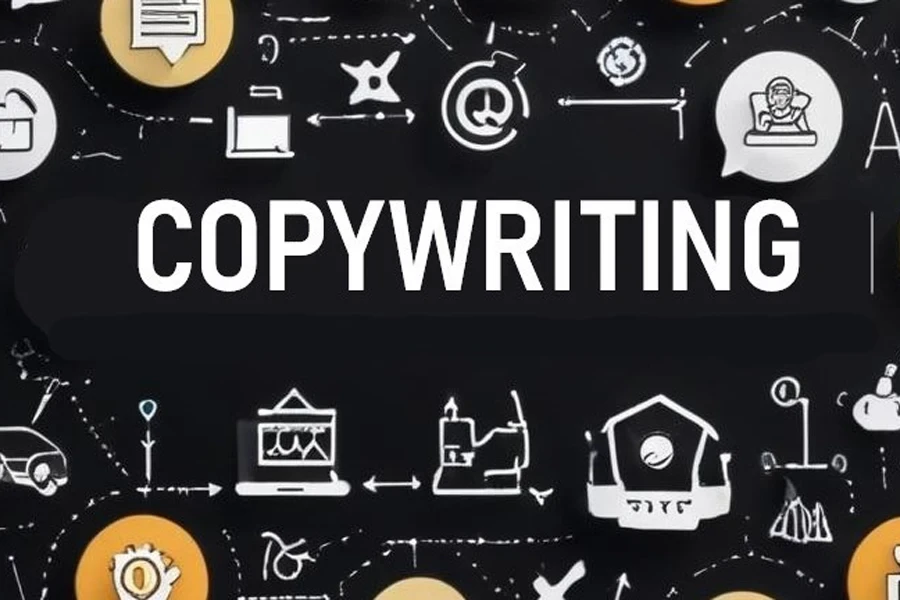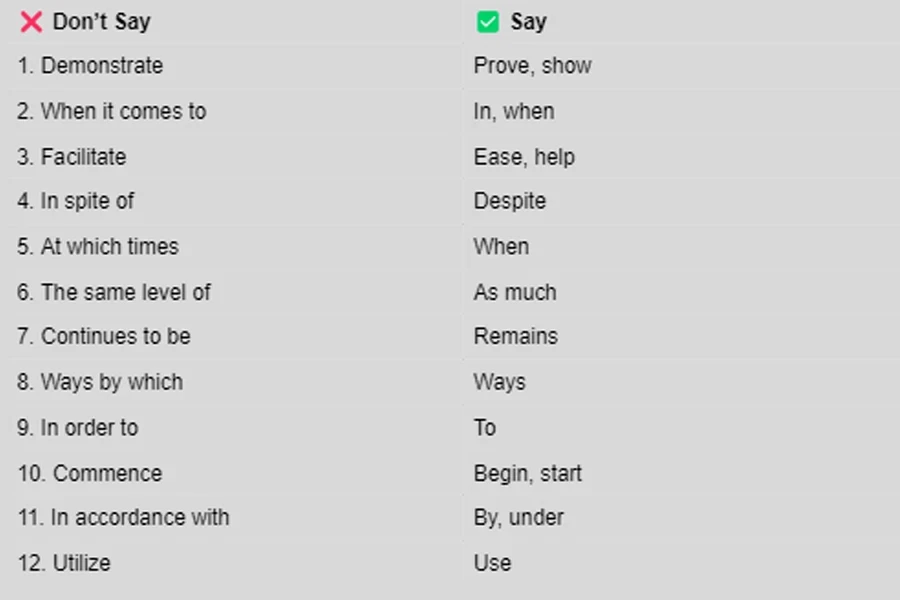Although the future is uncertain, humans are living in the most technologically advanced era in Earth’s history. With robots and AI becoming increasingly intelligent and prevalent, businesses need to write personal and authentic emails, infusing a human touch into their copywriting. But making writing sound human shouldn’t be difficult, right?
If it were that simple, there would be no need for this article. Unfortunately, it’s more challenging than it seems. However, businesses shouldn’t be discouraged. Whether they write their promotional messages and emails themselves or hire a professional, this article will provide five tips to help retailers infuse their text with a genuine human touch.
Table of Contents
What is copywriting, and why is it important?
Benefits of adding a human touch to copywriting
5 steps to follow when copywriting to avoid sounding robotic
Bottom line
What is copywriting, and why is it important?

Copywriting means writing text that attracts people and encourages them to buy a product, attend an event, or sign up for a newsletter. The goal is to persuade readers to take specific actions. This type of writing is crucial for advertising and marketing, as it involves creating persuasive messages, known as copy, to motivate people to act.
Note that copywriting is not the same as content writing. Content writers create longer pieces, such as blog posts or articles for magazines and blogs. Usually, copywriters create most of the copy people see today. These professionals know how to use words to connect with the audience and persuade them to take action.
Some also use AI tools to get new ideas or refine their work. However, what if businesses want to write their own copy? Although many companies hire copywriters to help them out, others may want to save costs and create their copy themselves. That’s where sounding more like a human becomes more important—and businesses can pull it off and get similar results to professionals if they know the ropes.
Benefits of adding a human touch to copywriting

Being a business owner doesn’t translate to being a great copywriter. Crafting effective copy requires specific skills and the right mindset to achieve the desired results. Businesses must sell products or services to thrive—a well-written copy is key to this success. Whether for advertisements, social media posts, landing pages, or emails, the aim is to get people to take action.
Hence, effective copywriting turns potential customers into paying clients. Here’s how good copy with a human touch benefits businesses:
- First, it creates an emotional connection with potential customers through words.
- This emotional connection helps them feel a bond with the brand.
- They start believing that the brand can solve their problems when they feel this connection.
- A strong call to action then encourages them to make a purchase.
- Ultimately, this boosts sales and conversions.
5 steps to follow when copywriting to avoid sounding robotic
Step 1: Write as you speak

The most important tip for effective copywriting is to mimic real-life speech. This approach eliminates overly formal or vague language, bridging the gap between the business and its reader. It also taps into one of a writer’s greatest strengths: authenticity.
But how can businesses ensure they write like they speak? Try this simple method: Read emails out loud before sending them. This style helps identify unnatural language, and, best of all, it’s free! But although it sounds straightforward, it’s not always that easy. Consider these two email examples from a transit card service and a regular shopping website.
Email example #1:
“Your transit card has been recharged automatically at the time below, and you will be charged in accordance with your payment agreement.”
Email example #2:
“Dear customer, your recent order has been successfully processed and will be dispatched within the next three to five business days. Please note that your tracking number will be provided once your package has been shipped.”
At first glance, there’s nothing wrong with these examples. They feel formal and get the message across. However, they are boring and lack any openings for an emotional connection with the audience. Simply put, they reek of robotic tones. Here’s how to make them sound more human.
Revised example #1:
“Your transit card has been topped up.”
Revised example #2:
“Hi there! Your order is all set and will be shipped in 3–5 business days. We’ll send you the tracking number as soon as it’s on its way.”
Now that’s much better. The revised examples are not too formal, but they don’t feel too informal either. Plus, they are more personal than the original examples, meaning consumers will feel a better connection with the copy.
Step 2: Use personal pronouns (you and I)

People are the targets of copywriting, so why not address them the same way businesses would face-to-face? People enjoy being addressed directly. Hence, using “you” and “I” makes the email more personal and easier to understand. But how many “yous” and “Is” is too much or too little?
Experts suggest counting how many times the pronouns appear in the text. If businesses run out of fingers while counting, they are doing great. In other words, it’s never too much. Check the subject line example below to see how this step works:
Subject line example:
“Reminder of upcoming subscription renewal”
Who starts a sentence with “Reminder of”? That’s just robotic. The lack of personal pronouns makes this example feel alien and uninspiring. Instead, the subject line example could look like this:
Revised subject line example:
“Your subscription is renewing soon”
The same applies to the email’s content. It should never lack personal pronouns, or it will sound (and feel) lifeless. Here’s an example:
Email example:
“Dear customer, we are pleased to inform you that your subscription has been successfully renewed. Please find the details of the new subscription period below. Thanks for the continued support.”
While some may say this email has personal pronouns, it doesn’t have enough to make it feel human. It lacks life and feels like something someone would just glance over. Here’s a better revision:
Revised email example:
“Hi there,
Great news! Your subscription has been renewed. Here are the details for your new subscription period.
Thank you for your continued support.
Best regards”
This revised example instantly hits all the notes without feeling like a drag. It’s brief, quirky, and more personal—all elements of a great, human-like copy.
Step 3: Be straightforward

“Don’t use big words when small ones work better”—that’s one of George Orwell’s six writing rules. Orwell’s point is simple: using unnecessarily long and complicated words might make businesses seem less smart. Plus, sticking to shorter words helps get to the point quicker.
Shorter words also make the writing clearer and easier to understand. But ironically, being brief takes more effort than being wordy. But it’s worth it. For instance, instead of saying:
“We are pleased to inform you that your E-mart shopping account has been credited with a bonus of 20 dollars.”
The business could just say:
“You’ve received a $20 bonus.”
It gets the point across faster and saves consumers a lot of time. After all, they have many other emails in their inbox, so the shorter businesses make theirs, the higher the chances of conversion or continued patronage. But how do retailers become more concise?
Try this method:
Write with as few words as possible. After completing the thought, stop—don’t add anything extra. Thankfully, English has lots of words. So, there’s usually a shorter option. Alternatively, just avoid these 12 common marketing mistakes:

Step 4: Show some personality

Every message is a chance to reveal the person behind the logo. A brand’s personality shines through in what they say and how they say it. Businesses should have unique viewpoints and tones, so why not let them shine?
Tone distinguishes one brand from another. Hence, businesses must invest some time in shaping it. When writing, sprinkle in humor, a dash of humanity, and real examples to make it sound more human than robotic.
Not sure if the copy has enough personality? Here’s a method to help check:
Take one previously written email and remove three elements: the logo, company name, and product name. Now, do the same for a competitor’s email and compare. Do they look too similar to tell who wrote which? Or does the business’s style, tone, and voice make them stand out easily? If it’s the latter, then great job! 👍 But if it’s the former, businesses must work on adding some personality to become different.
Step 5: Offer value

Every email business sends is a chance to make an impact, offer something useful, and foster a connection with the reader. Think of it like writing to a close friend—someone witty, smart, and approachable. People appreciate this friendly tone but love it even more if it contains a pleasant surprise.
However, offering something valuable doesn’t always have to be through discount codes, coupons, or promos. It could also be through sharing some helpful tips based on the customers’ recent activities with the brand. Take the transit card company, for example—they could share any of the following tips to build more connections with their audience:
- “Now’s the best time for metro rides in Copenhagen!”
- “Hey there, Roy! Just one more trip, and you’ll level up in our Loyalty Program.”
- “Check it out, Roy: Weekdays from 11 a.m. to 1 p.m. and 6 p.m. to 7 a.m. offer the cheapest fares from Copenhagen to Aarhus.”
By personalizing messages and offering valuable insights, businesses can make a lasting impression on their readers—without the help of a professional copywriter.
Bottom line
Copywriting is an effective way to convince customers to take the needed action. Carefully crafting pieces that feel human is essential to creating that emotional connection that moves people to become paying customers. While it’s easy to blame AI for a robotic copy, it’s far from the truth.
Some creators use AI to craft human-like pieces that easily resonate with customers. But whether businesses choose to use AI or rely on their skills, these five steps will help ensure every email they send feels personal and authentic.



